You can enjoy a free, self-guided walking tour of Denver’s historic Capitol Hill.
You can complete this tour in about 60 minutes, but you may want to take more time to snap some photos and explore the area a bit more.
Introduction
Denver is known as the Mile High City, as it’s 5,280 feet, or one mile, above sea level.
This city boasts over 150 years of history, so there are a number of notable landmarks worth visiting.
This tour will take you to nine of the most historic locations in the Capitol Hill neighborhood, Denver’s most historic and beautiful area.
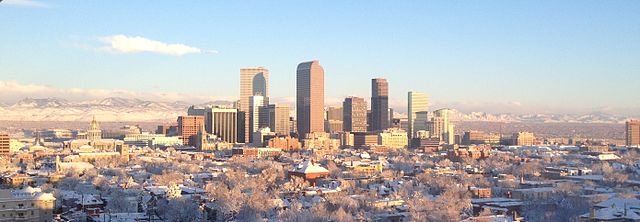
Experience both the hustle and bustle of the Colorado State Capitol and quieter streets of the Capitol Hill neighborhood as you follow the route below.
Or, join in on one of these great guided tours or self-guided Audio Adventures that are available to visitors and locals year-round in Denver:
- Denver Free Walking Tour
- Best of Denver Private Tour
- One of five unique Audio Adventures - self-guided tours narrated by local guides of different areas and landmarks in Denver
- A quirky or more distinctive tour, like the Ghosts of Capitol Hill Tour that explore this same neighborhood’s legend and lore in the evening, or the RiNo Street Art Tour, complete with a tasting of local chocolates and a beer garden visit!
1. Civic Center Park (14th and Bannock St.)
With sweeping views of the city, the State Capitol and the mountains, Civic Center Park is, and always has been, truly the heart of Denver.
Once the end of the stage line and now the location where numerous Denver festivals and events are held. This area was really planned as part of the City Beautiful movement led by then-mayor Robert Speer.
This moved Denver out of a time of the Wild West to something worthy of the nation’s attention. Some people claim it was designed to look like the city of Paris, France. What do you think?
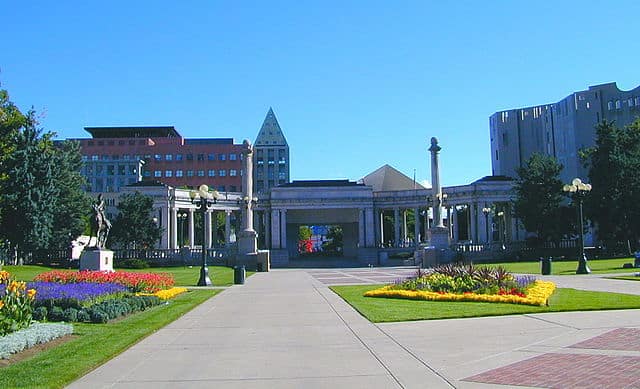
In the beginning, Capitol Hill, where Civic Center Park is located, was known as Brown’s Bluff, after Henry C. Brown.
Brown’s Bluff was mostly barren land with a gorgeous view of the mountains, but after Brown donated the land to construct the Colorado State Capitol, the scenery changed.
Neighborhoods started to emerge and wealthy residents started to move into the city.
If you’re really enjoying this area and want to see more, the Mile High Highlights Tour is a great fit and only 60-75 minutes to fit into a tight schedule.
2. Byers-Evans House Museum (13th and Bannock)
Enter one of Denver’s great historic homes, built in 1883 by Rocky Mountain News publisher Williams Byers and sold in 1889 to the family of William Gray Evans, an officer of the Denver Tramway Company.
Elizabeth Byers built the first charitable organization and was known for giving to the poor.
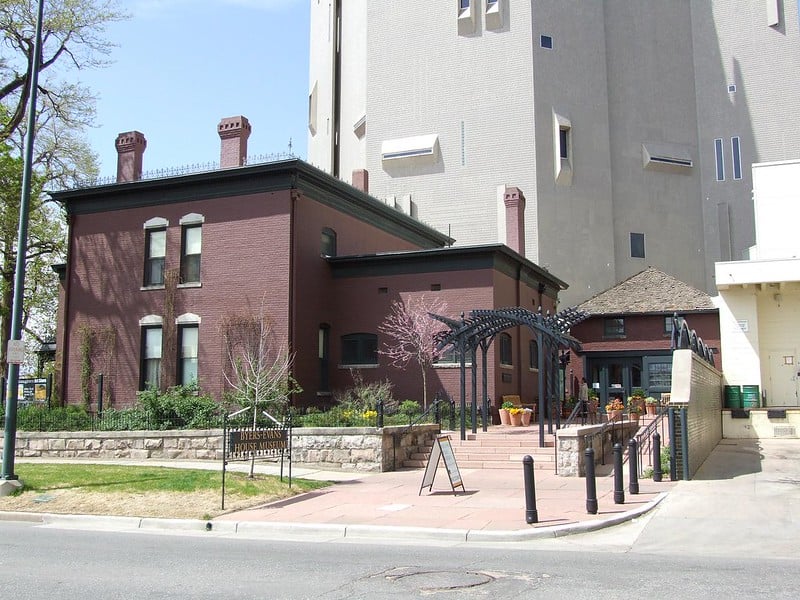
Today it is restored to reflect the period of 1912 – 1924 and reveals the personality and interests of the Evans family.
You can head inside to visit the museum and learn more about these families and their stories.
3. Kirkland Museum of Fine and Decorative Art (1201 Bannock St)
In 1932, artist Vance Kirkland rented (and later bought) the art school building at 1311 Pearl Street (built 1910–1911).
Kirkland occupied the building for almost fifty years and created over 1,100 paintings during his tenure, using it exclusively as a studio after returning as head of the art school at the University of Denver in 1946.
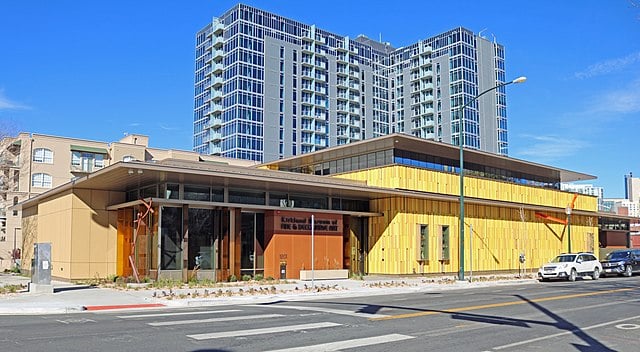
Both an innovator and a visionary, Kirkland is recognized as one of the century's great modern painters. In 2016 his studio was moved from its original location to its current site at 1201 Bannock Street.
This move preserved the building, and maintained its centrality to the experience at Kirkland Museum of Fine & Decorative Art, housed in a modern structure attached to the historic studio & art school building.
4. The Crawford Hill Mansion
Pass by the Crawford Hill Mansion, now a private business, to view the elegant exterior of the home of Louise Hill, Denver’s most prominent socialite from 1895 through the 1940s.
Louise was originally a southern bell and was known to have chosen 36 families in Denver she liked best and called them The Sacred 36.
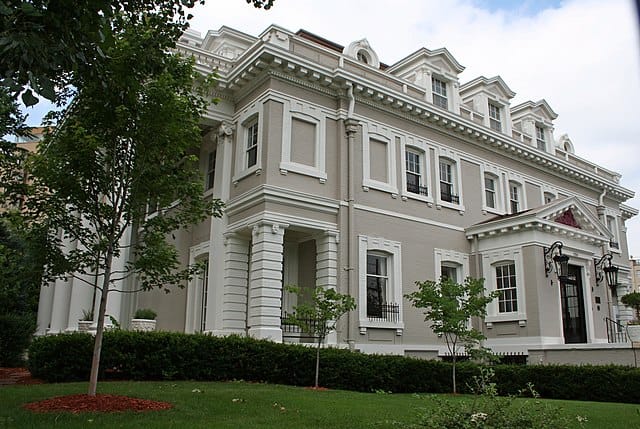
Louise and the Unsinkable Molly Brown were known to have a feud and not get along, after Louise snubbed her.
You’ll see the Molly Brown House Museum as the last stop on this walking tour.
5. Moffat Mansion
At Eight Avenue and Grant Street, there lie the remains of the former mansion resided by the family of David H. Moffat.
The building boasted over forty-two rooms, including a grand ballroom, a chandelier with 4,000 hand-cut crystals and the well-known Tiffany stained-glass window.
David Moffat acquired his fortune through the railroad business, by engineering the first tracks to cross over the continental divide.
His railroads frequently transported people and goods from Colorado to California. However, Moffat aspired to create more efficient routes by creating a way through the mountain, instead of around it.
After his death, this vision was realized through the Moffat Tunnel.
Unfortunately, the Moffat Mansion was demolished in 1972, to make way for a new office building. The onset of modernization in Denver during the sixties saw many historical buildings destroyed.
However, these tragedies brought awareness to historic preservation to the city of Denver.
Historic Denver Inc., which was created two years earlier to save the house of Molly Brown from a similar fate, received much support from citizens who vowed to preserve the city’s history..
6. Governor’s Residence (8th and Logan)
Check-out the Governor’s Residence at Boettcher Mansion, built in 1908 as a private home.
Today the Governor’s family occupies the upper floors, but the public is welcome to tour the first floor on select dates.

Walter Cheesman hired architects to build this residence in 1907, but he died before the mansion was finished, but his wife and son were able to live here for a few years.
Look for the Boaettcher couple’s initials embedded in the stained glass windows on the south side of the house, if you are able to go inside on the day that you visit.
7. Colburn Hotel
Pull up a chair in Charlie Brown’s Bar and Grill in the Colburn Hotel, where Jack Kerouac and Neal Cassady spent time in the summer of 1947, visiting Carolyn Cassady, who studied art and theater at the University of Denver and lived at the Colburn.
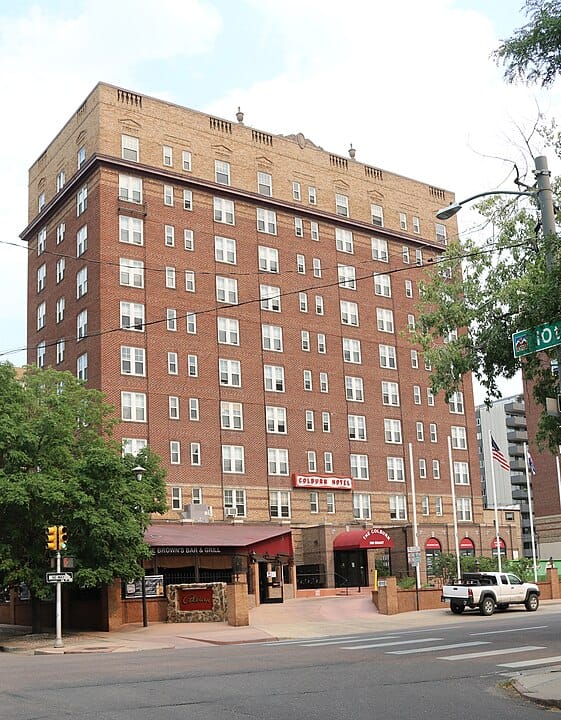
Youth in the 1950’s flooded the Capitol Hill neighborhood looking for excitement and late-night bars to visit, like Charlie Brown’s, which opened ot cater to this demographic, and this decade started to change the look and feel of the neighborhood, transforming the neighborhood from a very upscale neighborhood of the rich to an eclectic, diverse neighborhood.
8. Capitol Hill Bed and Breakfast
Also known as the Keating Mansion, this home was built in 1891 for Jeffrey and Mary Keating. Jeffrey Keating was a prominent businessman with ventures in real estate, insurance, and the McPhee and McGinnity Lumber Company.
The house was sold a number of times to different families, and then became a hotel in 1923.
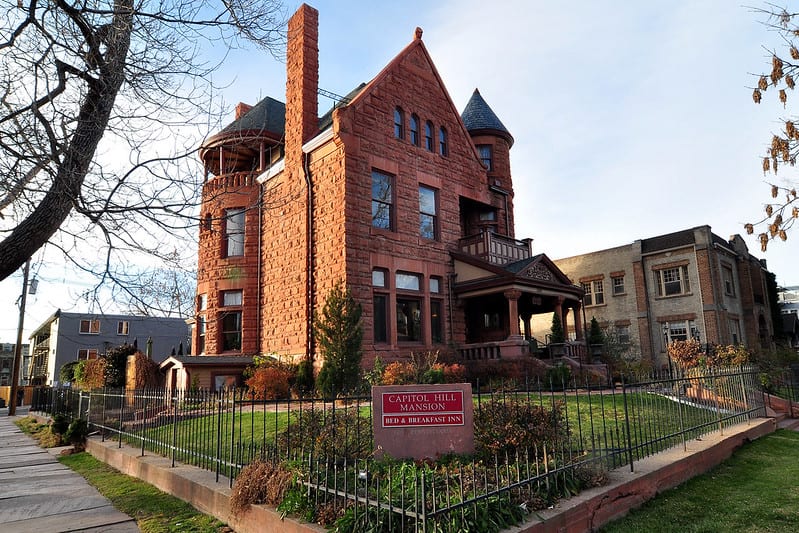
In 1993 it was purchased by its current owner, Carl Schmidt, and became the Capitol Hill Bed and Breakfast.
Each room in the home is named after a different Colorado wildflower after it was turned back from offices into a bed and breakfast.
9. The Molly Brown House Museum
Molly Brown’s life is a perfect example of the rags-to-riches stories that Denver and the Wild West were known for.
If you don’t know the name Molly Brown, be sure to watch the movie Titanic, as she famously survived the sinking of the big ship.
The Molly Brown House stands as an enduring symbol of the Victorian era and Denver’s Capitol Hill neighborhood where the city’s most prominent families lived.
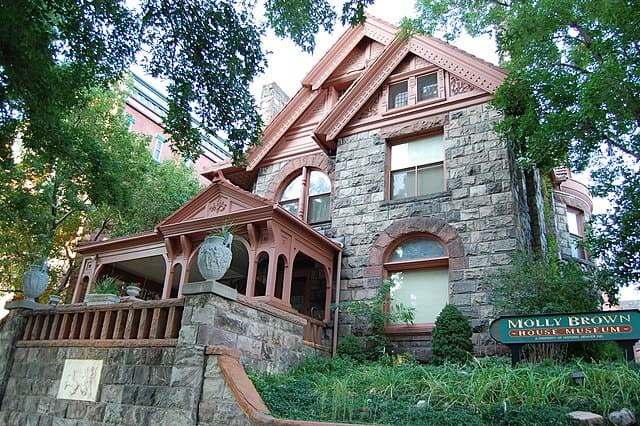
Restored to its 1910 grandeur, the story of the unsinkable Margaret “Molly” Brown is revealed during guided or self-guided tours that take you back in time that you can do inside.
For a bit more excitement, you can also hear the darker tales and unexplained happenings that have led this home to be infamous with paranormal experts.
Just join the Ghosts of Capitol Hill Tour which ends here at the Molly Brown House.
We hope you enjoyed seeing the streets leading in and out of Capitol Hill.
Denver is now so much more than the temporary mining town it once was and a lot of that was due to an effort to create a notable city, with the city’s founders constructing grand homes along the streets west of Cheesman Park, in Capitol Hill, where you just explored.
Enjoy the rest of your time in the Mile High City. and if you want to see and experience more sights and landmarks and hear the stories behind them, be sure to join one of these top walking tours, led by local guides, to pack more fun, insight and recommendations into a few hours than you thought possible!

